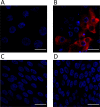Replication of Severe Acute Respiratory Syndrome Coronavirus 2 in Human Respiratory Epithelium
- PMID: 32434888
- PMCID: PMC7375387
- DOI: 10.1128/JVI.00957-20
Replication of Severe Acute Respiratory Syndrome Coronavirus 2 in Human Respiratory Epithelium
Abstract
Currently, there are four seasonal coronaviruses associated with relatively mild respiratory tract disease in humans. However, there is also a plethora of animal coronaviruses which have the potential to cross the species border. This regularly results in the emergence of new viruses in humans. In 2002, severe acute respiratory syndrome coronavirus (SARS-CoV) emerged and rapidly disappeared in May 2003. In 2012, Middle East respiratory syndrome coronavirus (MERS-CoV) was identified as a possible threat to humans, but its pandemic potential so far is minimal, as human-to-human transmission is ineffective. The end of 2019 brought us information about severe acute respiratory syndrome coronavirus 2 (SARS-CoV-2) emergence, and the virus rapidly spread in 2020, causing an unprecedented pandemic. At present, studies on the virus are carried out using a surrogate system based on the immortalized simian Vero E6 cell line. This model is convenient for diagnostics, but it has serious limitations and does not allow for understanding of the biology and evolution of the virus. Here, we show that fully differentiated human airway epithelium cultures constitute an excellent model to study infection with the novel human coronavirus SARS-CoV-2. We observed efficient replication of the virus in the tissue, with maximal replication at 2 days postinfection. The virus replicated in ciliated cells and was released apically.IMPORTANCE Severe acute respiratory syndrome coronavirus 2 (SARS-CoV-2) emerged by the end of 2019 and rapidly spread in 2020. At present, it is of utmost importance to understand the biology of the virus, rapidly assess the treatment potential of existing drugs, and develop new active compounds. While some animal models for such studies are under development, most of the research is carried out in Vero E6 cells. Here, we propose fully differentiated human airway epithelium cultures as a model for studies on SARS-CoV-2.
Keywords: COVID-19; Coronaviridae; FISH; HAE; NCoV-2019; SARS; SARS-CoV-2; coronavirus; human airway epithelium; model.
Copyright © 2020 American Society for Microbiology.
Figures




References
Publication types
MeSH terms
LinkOut - more resources
Full Text Sources
Other Literature Sources
Miscellaneous

